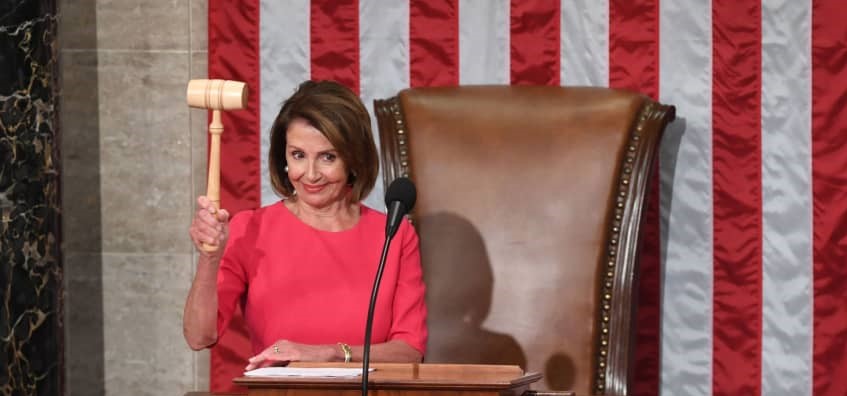Democrats take control of House
January 4, 2019 | Expert Insights

Nancy Pelosi returned as the Speaker of the House of Representatives and was successful in passing a bill to end the partial Federal Government shutdown without allocating any funds for the Border Wall.
Background
A government shutdown occurs when Congress fails to pass a resolution or the President fails to sign appropriations legislation to fund federal government operations. Since 1976, when the current budget and appropriations process was enacted, there have been twenty gaps in budget funding, eight of which have led to federal employees’ pay being suspended.
Prior to 1990, funding gaps did not always lead to government shutdowns, but since then the practice has been to close down the government for all funding gaps. This has occurred at the state, territorial and local levels of government.
Government shutdowns disrupt government services and increases cost to the government due to lost labour. Standard & Poor's, the financial rating agency, stated on October 16, 2013, that the shutdown had "to date taken $24 billion out of the economy", and "shaved at least 0.6 per cent off annualized fourth-quarter 2013 GDP growth".
The 2018-2019 Federal Government close down began on 22 December 2018 when the President refused to sign a continuing bill to fund the government. The bill did not contain any allocations for a border wall with Mexico, which was one of his campaign promises.
Analysis
The 116th Congress gavelled into session on Thursday, returning Nancy Pelosi to the House speaker’s office and ushering in a class of Democratic freshmen ready to confront President Donald Trump.
The United States House of Representatives, where Democrats now hold a majority, approved legislation on Thursday (Jan 3) to end a partial government shutdown and to fund the Department of Homeland Security through Feb 8. Under the Bills, the departments of State, Commerce, Agriculture, Labour, Treasury and other agencies would be funded through Sept 30, the end of the current fiscal year.
The Democrats wasted no time flexing their new power in the House by approving legislation backed by new Speaker Nancy Pelosi that would end a 13-day partial government shutdown, ignoring President Donald Trump’s demand for US$5 billion (S$6.8 billion) for a border wall.
Pelosi was elected speaker 220-192, with 15 Democrats rejecting her. She vowed, in prepared remarks, “to restore integrity to government so that people can have confidence that government works for the public interest, not the special interests.”
The new Congress is like none other. There are more women than ever before, and a new generation of Muslims, Latinos, Native Americans and African-Americans in the House is creating what academics call a reflective democracy, more aligned with the population of the United States. The Republican side in the House is still made up mostly of white men, and in the Senate, Republicans bolstered their ranks in the majority.
The White House issued a veto threat against both parts of the Democratic legislation. However, that did not deter House Democrats. This marked the first day of divided government in Washington since Mr. Trump took office in January 2017, as Democrats took control in the House from fellow Republicans, who remain in charge of the Senate.
The 2019-2020 Congress convened with roughly a quarter of the federal government closed, affecting 800,000 employees.
Assessment
Our assessment is that the incoming Democratic majority of the House has shown its strength by re-opening the Federal Government without bowing down to President Trump’s demands. We believe that President Trump will find it increasingly difficult to push his legislative agenda forward with a divided Congress.
Read more:








Comments